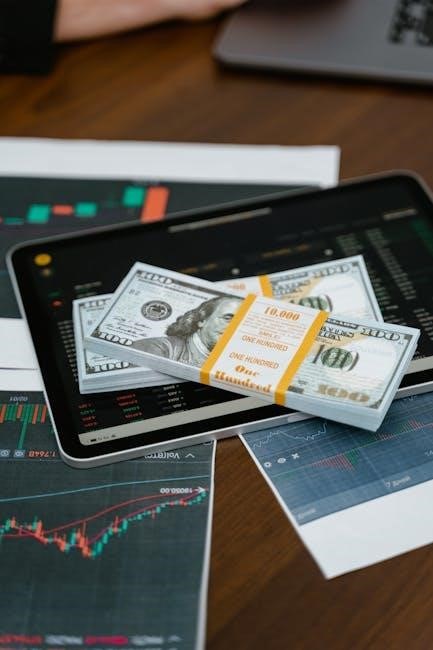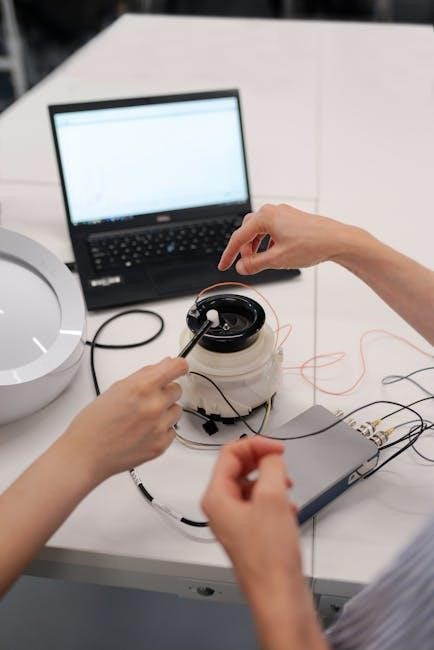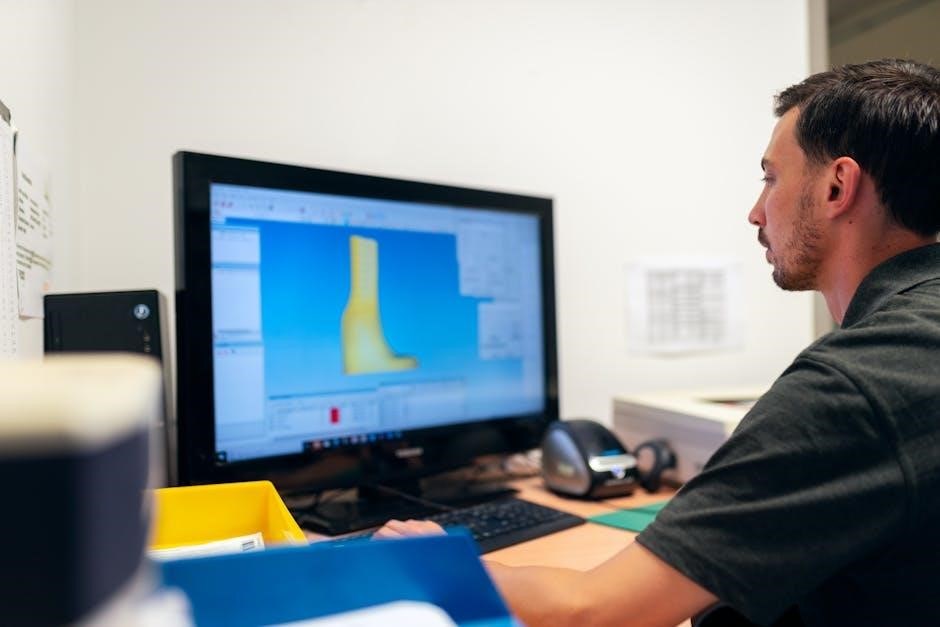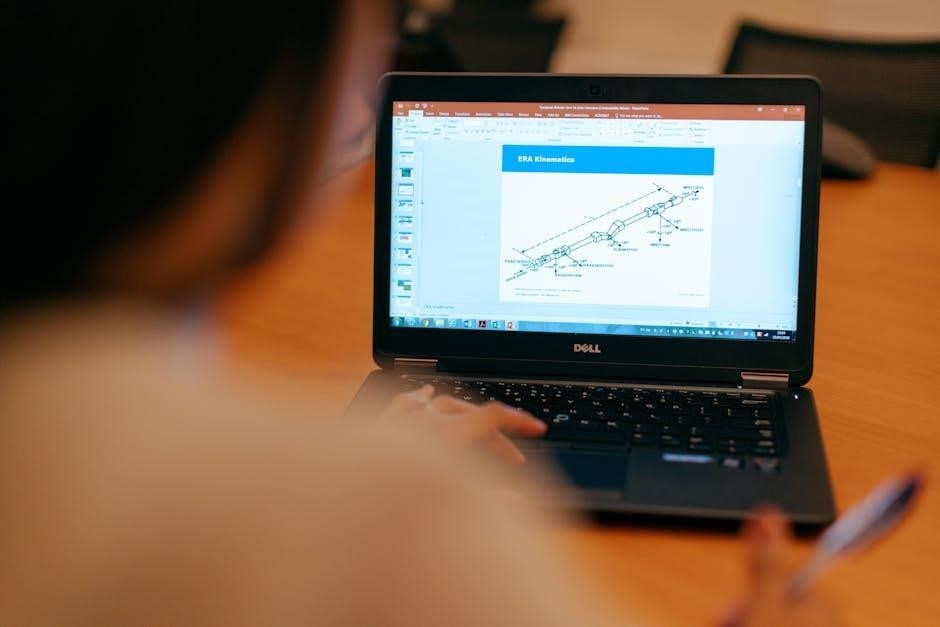Currency trading, or forex trading, is the world’s largest financial market, offering vast opportunities for profit․ This guide provides a clear, accessible introduction for beginners, explaining key concepts, strategies, and tools to get started in forex trading successfully․
What is Currency Trading?
Currency trading, also known as forex trading, involves buying and selling currencies on global financial markets․ It is the largest and most liquid market worldwide, with a daily turnover exceeding $6 trillion․ Traders speculate on exchange rates between currency pairs, such as EUR/USD or GBP/JPY, aiming to profit from price fluctuations․ The forex market operates 24/5, allowing traders to participate from anywhere․ Key factors influencing currency prices include economic data, geopolitical events, and central bank policies․ Brokers act as intermediaries, enabling individuals to trade․ This market offers high leverage but also carries significant risks, making it essential for beginners to understand the basics before starting․

Why is Currency Trading Important?
Currency trading is crucial for global economic stability, enabling countries to conduct international trade and settle payments․ It facilitates the conversion of currencies, supporting cross-border investments and tourism․ Corporations use forex to hedge against exchange rate risks, protecting their financial positions․ Additionally, central banks participate to influence monetary policy and stabilize economies․ For individual investors, currency trading offers diversification and potential high returns․ The forex market’s liquidity and accessibility make it a popular choice for traders worldwide․ Understanding and engaging in currency trading can enhance financial literacy and provide opportunities for wealth growth in an interconnected global economy․

Essential Concepts in Currency Trading
Currency trading involves understanding key concepts like currency pairs, exchange rates, and market structures․ These fundamentals are crucial for navigating the forex market effectively and making informed trades․
Currency Pairs and How They Work
Currency pairs are the foundation of forex trading, representing the exchange rate between two currencies․ For example, EUR/USD shows the value of euros in dollars․ The first currency (base) is bought or sold against the second (quote)․ Pairs like USD/JPY or GBP/USD are commonly traded․ Major pairs involve major economies, while exotic pairs include emerging markets․ Understanding how these pairs move helps traders speculate on economic trends․ The exchange rate fluctuates based on supply, demand, and market sentiment․ Traders aim to profit by predicting whether the base currency will strengthen or weaken against the quote currency․ This core concept is vital for executing successful trades in the forex market․
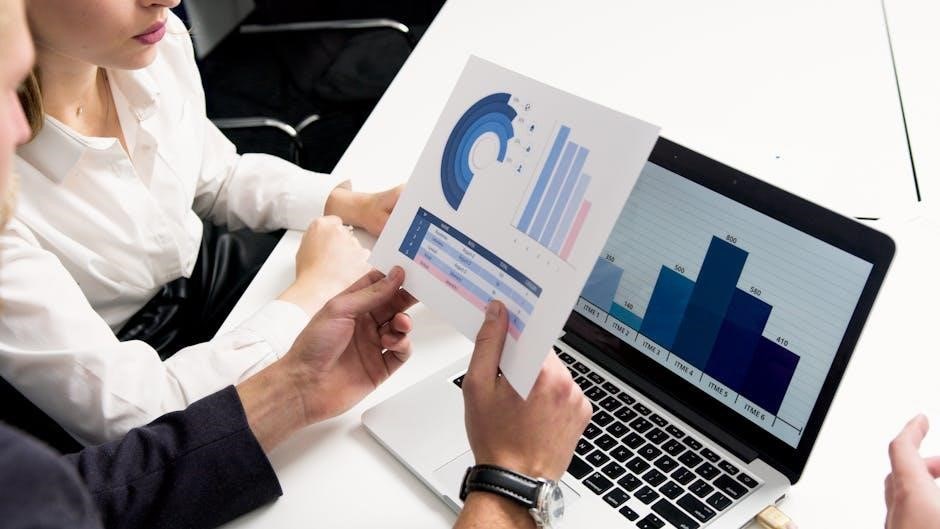
Understanding the Forex Market Structure
The forex market operates globally, decentralized, with trading conducted 24 hours a day, five days a week; It is divided into three main segments: spot, futures, and options; The spot market is the largest, accounting for most trading volume, and involves immediate currency exchange․ Futures and options are derivatives, traded on exchanges, and involve contracts for future delivery․ The interbank market, where banks and financial institutions trade, is the backbone of forex․ Retail traders access the market through brokers․ High liquidity and volatility characterize forex, making it attractive for speculation and hedging․ Understanding this structure helps traders navigate the market effectively and make informed decisions․
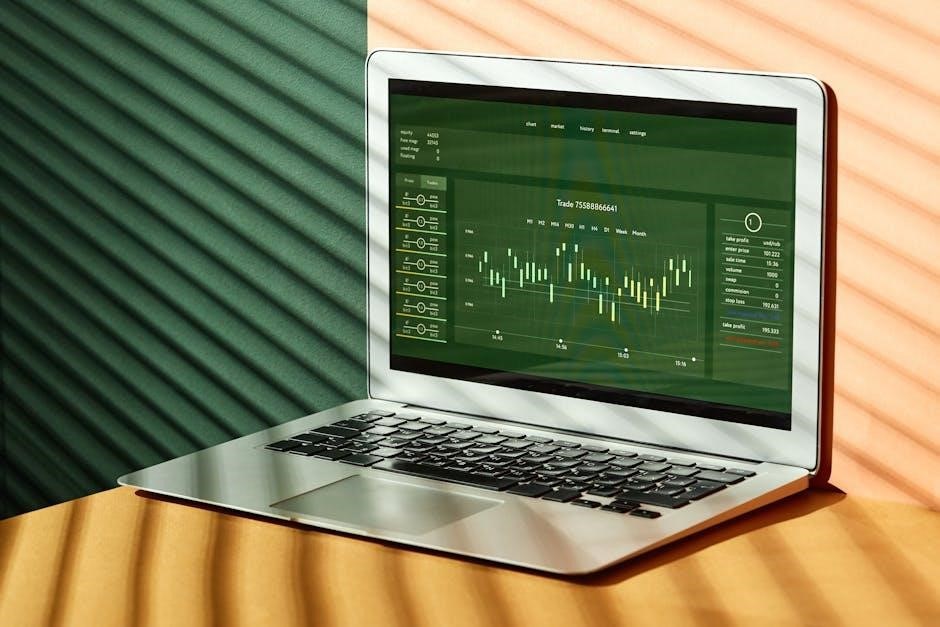
Getting Started with Currency Trading
Begin by understanding the forex market, setting up a demo account, and developing a trading plan․ Start with a reputable broker and educate yourself on currency pairs, risks, and strategies to build confidence and skills for successful trading․
Choosing the Right Forex Broker
Selecting a reliable Forex broker is crucial for successful trading․ Look for brokers regulated by reputable authorities to ensure safety and transparency․ Compare their platforms, tools, and fees to find one that suits your needs․ Consider customer support, educational resources, and demo account options to help you learn and practice․ A good broker should offer competitive spreads, reliable execution, and user-friendly interfaces․ Reading reviews and testimonials from other traders can also provide valuable insights․ Ensure the broker supports your preferred payment methods and offers access to the currency pairs you want to trade․ A trustworthy broker is the foundation of a successful trading journey․
Setting Up a Demo Trading Account
A demo trading account is a risk-free environment where you can practice currency trading using virtual funds․ It replicates real-market conditions, allowing you to test strategies and familiarize yourself with trading platforms․ To set up a demo account, visit your chosen broker’s website, fill out the registration form, and verify your email if required․ Once activated, you’ll receive access to virtual funds, which you can use to trade currency pairs․ This is an essential step for beginners to build confidence and refine their skills without financial risk․ Many brokers offer unlimited demo accounts, enabling continuous learning and improvement before transitioning to live trading․

Key Trading Strategies for Beginners
Key trading strategies for beginners include trend following, range trading, breakout, and scalp trading․ These approaches require discipline and effective risk management for long-term success․
Technical analysis is a method of predicting price movements by studying historical market data, primarily through charts and indicators․ It helps traders identify trends, support/resistance levels, and potential reversals․ Common tools include moving averages, RSI, and candlestick patterns․ By analyzing these elements, traders can make informed decisions without relying on fundamental factors․ Technical analysis is widely used in forex trading due to its ability to provide insights into market sentiment and potential price actions․ While it is not foolproof, mastering technical analysis can significantly enhance a trader’s ability to navigate the markets effectively and make profitable trades consistently over time․
Basics of Fundamental Analysis
Fundamental analysis focuses on evaluating economic, political, and social factors that influence currency values․ It involves studying economic indicators like GDP, inflation rates, and employment data to predict currency movements․ Traders also consider geopolitical events, central bank policies, and interest rates, as these can significantly impact exchange rates․ By understanding these factors, traders can identify long-term trends and make informed trading decisions․ While technical analysis looks at charts, fundamental analysis provides insights into the underlying health of an economy, helping traders anticipate future price movements in the forex market․ This approach is essential for developing a well-rounded trading strategy․

Important Resources for Learning
Discover essential resources like “Currency Trading For Dummies” by Kathleen Brooks and “The Art of Currency Trading” for comprehensive guides․ Explore online manuals, e-books, and real-time market data for hands-on learning․
Recommended Books on Currency Trading
For a deeper understanding of currency trading, several books are highly recommended․ “Currency Trading For Dummies” by Kathleen Brooks is an excellent starting point, offering a straightforward guide for beginners․ “The Art of Currency Trading” provides comprehensive insights into real-world trading strategies․ Additionally, “The Forex Options Course” by Abe Cofnas is ideal for those interested in advanced topics like currency options․ These books are available in various formats, including PDF, allowing easy access for learners․ They cover essential topics such as market structure, technical analysis, and risk management, making them invaluable resources for both new and experienced traders aiming to master the forex market․
Online Communities and Forums for Traders
Engaging with online communities and forums is a great way to learn and connect with other traders․ Platforms like Reddit, with subreddits such as r/Forex and r/Daytrading, offer valuable discussions and advice․ Additionally, specialized forums like BabyPips and Forex Factory provide extensive resources, tutorials, and real-time market insights․ These communities allow traders to share experiences, discuss strategies, and learn from experts․ Many also host webinars, tutorials, and live trading sessions․ For beginners, these platforms are invaluable for building knowledge and confidence․ They also offer access to tools like economic calendars and technical indicators, helping traders stay informed and make better decisions․ Joining these communities can significantly enhance your trading journey․
Currency trading offers immense opportunities but requires dedication and continuous learning․ Master the basics, stay updated with market trends, and practice regularly to achieve long-term success․
Currency trading involves exchanging one currency for another in the forex market, the world’s most liquid and volatile market․ Key concepts include understanding currency pairs, brokers, and market structures․ Technical and fundamental analyses are essential tools for making informed trades․ Beginners should start with a demo account to practice risk-free․ Educational resources like books and online communities can accelerate learning․ Risk management and disciplined strategies are crucial for long-term success․ Staying updated on global economic trends and geopolitical events is vital․ Continuous practice and learning will help traders refine their skills and adapt to market changes effectively․
How to Continue Learning and Improving
To continue mastering currency trading, focus on continuous education through books like Currency Trading For Dummies and The Art of Currency Trading․ Utilize online tutorials and join forums for traders to share insights․ Practice with demo accounts to refine strategies without financial risk․ Stay updated on global economic trends and geopolitical events impacting currencies․ Regularly review your trading portfolio to identify strengths and areas for improvement․ Engage in webinars and workshops to deepen your knowledge of technical and fundamental analysis․ Surround yourself with experienced traders for mentorship and support․ Consistent practice, discipline, and patience are key to achieving long-term success in forex trading․
